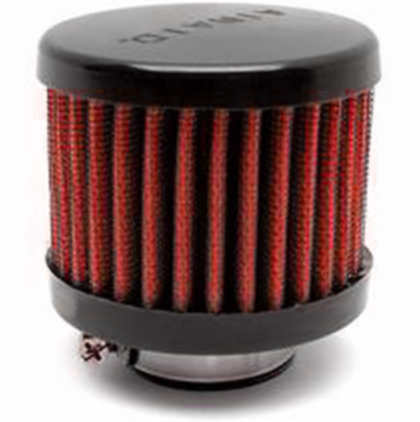Most modern piston engines are equipped with a positive crankcase ventilation (PCV) valve somewhere on the vehicle. The valve's purpose is to allow excess pressure in the crankcase to vent out, sometimes to the engine bay, and often into the air intake system.
Some crankcase pressure is generated by combustion blow-by, especially in worn out engines. The blow-by often contains fuel and carbon/soot, which can dilute the oil or turn it acidic, reducing the quality of its lubrication properties. Without a pressure vent, the pressure would also force oil out of the seals.
Many vehicles are equipped with generic PCV valves, such as the one at the right. Most of the differences are in the grommets they are set in, and the piping heading out of it.
Sometimes the PCV valve gets gummed up after a lot of use, and needs to be replaced. It can be cleaned, but the new valve often costs less than the parts cleaner fluid/spray, which may not solve the problem. Carburettor/throttle body cleaner is typically used when this choice is made.
Inside a PCV Valve
Crankcase Breather

Normally the PCV valve is connected to hoses which lead to the intake so that the vapors can become part of the combustion process. While this may slightly improve fuel efficency, it also adds to the carbon build-up on the inside of the intake passageways. The alternative option is to add a crankcase breather filter, so that the PCV valve vents to the outside. This set-up isn't legal in some regions, especially where emissions are highly regulated.
These filters are often seen on street performance cars, since they give it a non-original-equipment look and keep any intake modifications cleaner, longer. Race cars typically don't use the same filters if they use one at all, since their engines are rebuilt and cleaned often enough to not make the benefits worth the change.
PCV Valve Operation Video
This video shows how a PCV valve operates within the system of an engine.
